The 2nd Foreign Cavalry Regiment (2e REC) was one of only two cavalry regiments that ever existed within the French Foreign Legion. It was formed in Morocco in 1939 but was inactivated shortly afterward, in 1940. Reconstituted in 1946, the regiment once again served in North Africa, while one of its squadrons took part in France’s military operations in Madagascar from 1949 to 1951. After taking an active role in the Algerian War (1954–1962), the 2e REC was finally deactivated in 1962.
—
L'article en français : 2e Régiment Étranger de Cavalerie
—
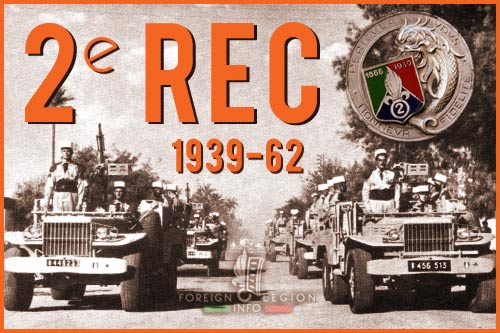
Introduction
In the early 1920s, the Foreign Legion underwent a full reorganization and was reinforced by, among other units, a cavalry regiment – the 1er REC. Starting in 1925, its squadrons operated in Morocco, then a French protectorate in North Africa, where a campaign to pacify the country continued until 1934.
After pacification was achieved, three Legion cavalry squadrons remained in Morocco and formed an administratively autonomous unit: the Moroccan Squadron Group of the 1er REC (Groupement des Escadrons du 1er REC au Maroc). The group’s headquarters were in Midelt, a town in central Morocco, and it consisted of the 1er REC’s 3rd, 4th, and 5th Squadrons. They maintained order, patrolled central and southern Morocco, and carried out road construction work.
The group’s relatively independent existence continued until mid-1939, when the geopolitical situation in Europe deteriorated and a new conflict appeared imminent. Paris decided to strengthen its forces and create new units – a measure that also applied to troops stationed in French North Africa.
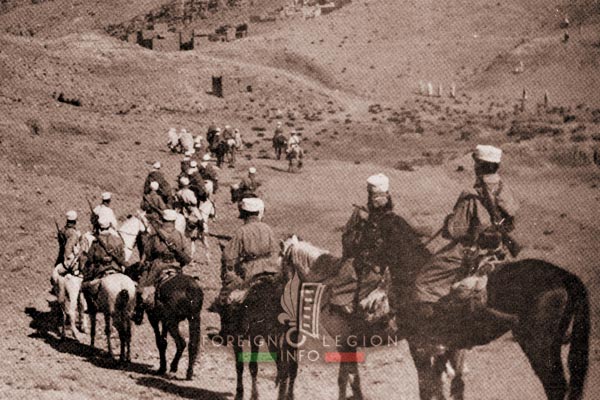
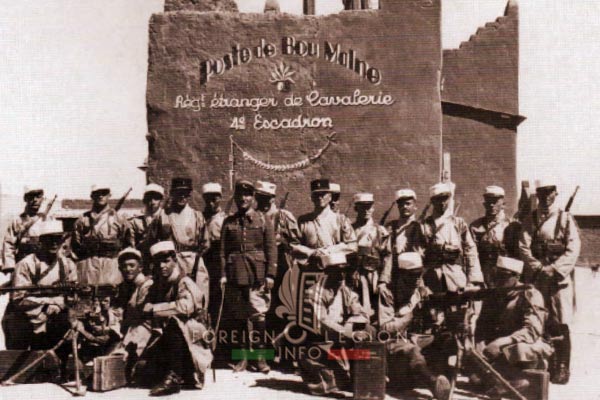
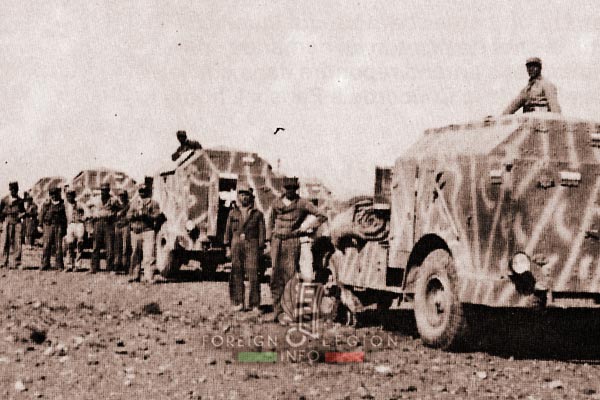
2e REC and GRD 97, 1939-1940
The 1er REC’s squadron group in Morocco was therefore transformed into a new unit: the 2nd Foreign Cavalry Regiment (2e Régiment étranger de cavalerie, 2e REC). It was officially formed on July 1, 1939, with its headquarters still based in Midelt. Lieutenant Colonel Charles Farine remained in command, having led the previous Moroccan Squadron Group since June 1937.
The 2e REC comprised about 500 cavalrymen divided into two horse-mounted squadrons (3rd and 4th) grouped under Major Billon, and one armored squadron (5th). Each squadron consisted of three pelotons (cavalry platoons, or troops). The units continued to perform their previous duties.
While the 1er REC was nicknamed the “Royal-Foreign,” the 2e REC was given the nickname “Dauphin-Foreign” (Dauphin-Étranger). Meaning “dolphin” in French, Dauphin was the title traditionally given to the eldest son of the king of France. Dauphin-Étranger had also been the name of France’s foreign cavalry regiment from 1666 to 1761, and the 2e REC formally drew its heritage from that unit.
The regimental headquarters was located in Midelt, with Lieutenant Colonel Farine and his deputy, Captain Aubry. It oversaw several branches of the 2e REC, including the mounted group led by Major Billon, which brought together the 3rd and 4th Squadrons. The paymaster was Lieutenant Marque, communications were handled by Lieutenant Zur Nedden, and logistics by Lieutenant Rivière.
The 3rd Squadron, the Legion’s first cavalry unit deployed to Morocco (in 1925), was based at Bou Malne, at a former post of the 4th Squadron. It was commanded by Captain Jacques Colonna-Renucci, who had succeeded Captain Testu de Balincourt. Its platoon leaders were Lieutenant Alexandre Djintcharadzé, a Georgian officer who temporarily commanded the squadron until July 15, Lieutenant Henri de Vismes, later the first commanding officer of the 2e REP in Algeria (1955), and Lieutenant Nodet.
The 4th Squadron, a unit that distinguished itself in Syria in 1925 and was awarded a fourragère, was stationed in Midelt after previously being based in Ouarzazate until May 1938. It was commanded by Captain René Lennuyeux, who later became the commander of the Foreign Legion between 1955 and 1958. Its platoon leaders were Lieutenant Makeiew, designer of the first insignia of the 2e REC, Lieutenant Mermet, and Lieutenant d’Annam.
The 5th Squadron was a motorized unit with two vehicles per platoon, equipped with White-Laffly and Panhard armored cars. It was stationed in Ouarzazate and commanded by Captain Guibert. The platoon leaders were Lieutenant Breuil, Lieutenant Prouhet, and Lieutenant Sokoloff.
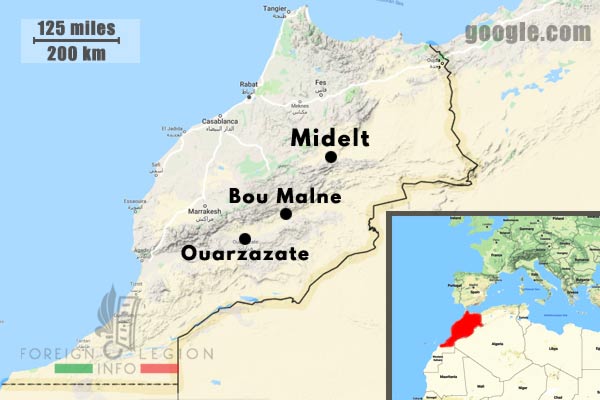
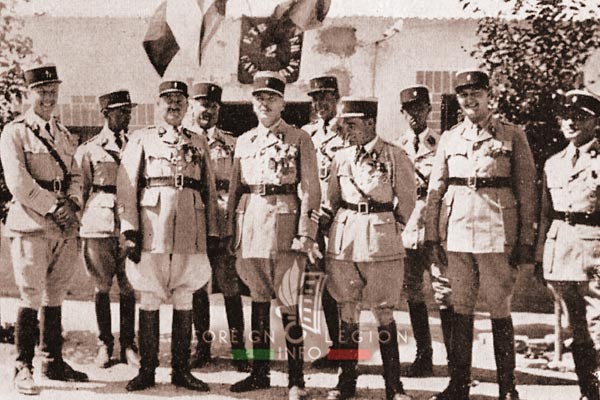
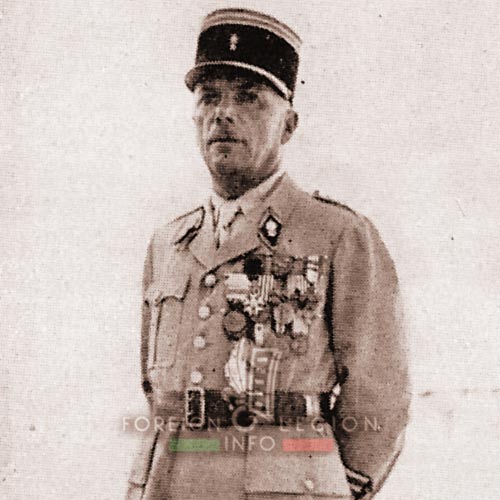
In September 1939, following Germany’s invasion of Poland, France and Great Britain declared war. In North Africa, provisional units were formed to help defend France, including several divisional reconnaissance groups (Groupes de reconnaissance divisionnaires, GRDs). These were units composed of cavalrymen assigned to provide reconnaissance for their respective divisions.
The cavalrymen of the Foreign Legion formed one of these units – GRD 97 – organized in Tunisia in early February 1940. It included a squadron from the 1er REC, one from the 2e REC under Captain Colonna-Renucci, and two squadrons drawn from the Foreign Legion depot (DCRE) in Algeria. One of these was commanded by Captain Djintcharadze, a Georgian officer and former deputy of Captain Colonna-Renucci in the 2e REC.
The GRD 97, commanded by Lieutenant Colonel Lacombe de la Tour and assigned to the 7th North African Infantry Division (7e DINA), took part in the 1940 Battle of France. While slowing the German advance, it lost two-thirds of its strength, including its commanding officer. A citation at the Army level later recognized the heroism of the GRD legionnaires.
In late June 1940, an armistice was signed between France and Germany. The 2e REC elements returned to Morocco and rejoined their regiment – though only for a brief period. Following France’s defeat and the subsequent armistice, the French Army was drastically reorganized and reduced at the end of the year. This reorganization also affected the 2e REC. Under the command of Major Billon since mid-September, the regiment was inactivated on November 15, 1940. Its squadrons were absorbed by the 1er REC, which had moved from Tunisia to Morocco a month earlier. The 3rd Squadron became the new 2nd Squadron of the 1er REC and was stationed in Oujda, a city located near the Algerian border; the 4th Squadron kept its number and was based in Fez; and the 5th Squadron became the 1st Squadron, also in Oujda.
2e REC: First Regimental Insignia
Sometime before the official creation of the 2e REC, Lieutenant Makeiew, then-deputy commander of the 4th Squadron 1er REC, designed a mock-up of the future regiment’s insignia. On July 1, 1939, he presented the framed design to Lt. Col. Farine at the Restaurant du Coq d’Or in Midelt, where the 2e REC officers were celebrating the birth of their unit. The commanding officer thanked Lieutenant Makeiew and hung the insignia on the wall.
Later that month, Lieutenant d’Annam from the same squadron created a wooden model of the insignia (replacing the words “REG ETRANGER de CAVALERIE” with “VALEUR ET DISCIPLINE”, the Legion’s Napoleonic-era motto). On August 9, 1939, the insignia was approved by French military authorities in Morocco. However, the outbreak of World War II halted any further steps to produce the badge for the regiment’s personnel.
That is why most sources state that this insignia was never actually manufactured. However, a 1968 issue of Képi blanc, the official magazine of the Foreign Legion, included an account by Captain F. (sic), who claimed that in June 1940, at Sathonay (France), Lieutenant Makeiew distributed several silver-plated versions of the badge among his officers of the Depot Squadron, GRD 97. The badges, as the captain noted, had been crafted by a local artisan from Oujda and were attached to the officers’ uniform.
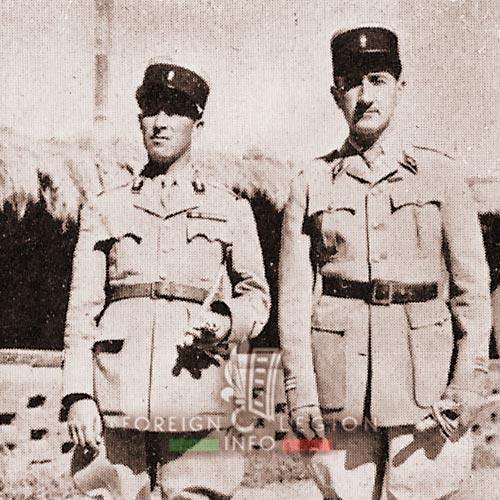
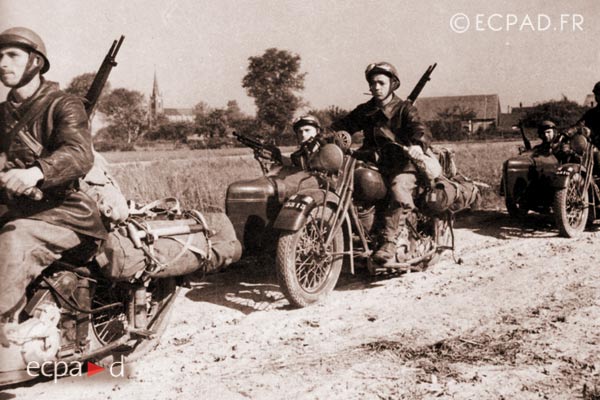
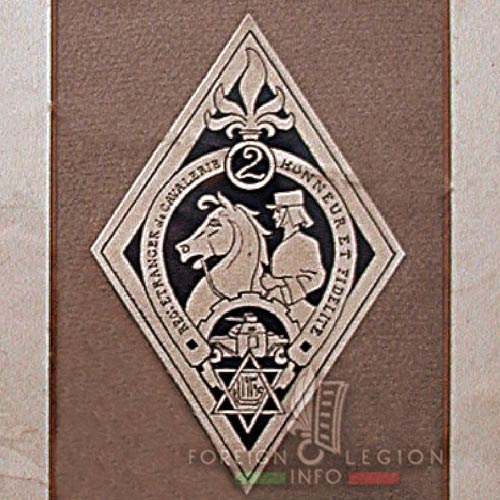
2e REC in Algeria in 1946
By late 1945, Japan’s surrender had ended World War II. Meanwhile, in Japanese-occupied French Indochina, the Viet Minh – a nationalist movement under Communist Party leader Ho Chi Minh – seized power and declared Vietnam’s independence. When France reasserted its authority soon afterward, the Viet Minh (and other anti-French groups) launched a guerrilla war that evolved into the First Indochina War.
One by one, Legion units left North Africa for Southeast Asia to reinforce French forces there. The 1er REC was scheduled to depart Morocco in late 1946. To replace it and assume its duties, the 2nd Foreign Cavalry Regiment was reconstituted on June 1, 1946, in neighboring French Algeria under Lieutenant Colonel René Lennuyeux – formerly commander of the 4th Squadron, 2e REC (1939–1940). The regiment comprised a headquarters squadron and two reconnaissance squadrons, initially stationed in Saïda and then in Aïn el Hadjar, both long-standing Legion training centers. This may indicate that the regiment existed mostly on paper at that stage, while its men were still undergoing training.
By September 9, 1946, the 2e REC was formally inactivated. At that time, its headquarters were based in Orléansville, with squadrons posted in Blida and Tenès, all in Algeria.
2e REC in Morocco in 1946
In October 1946, after some hesitation, the 1er REC in Morocco was ordered to deploy to Indochina (in December) and to make room for its successor unit. Thus, the 2e REC was reactivated for the third time on November 1, 1946, again under Lieutenant Colonel Lennuyeux. The regiment now consisted of an HQ squadron and four operational squadrons stationed at Camp Clark and Camp Roze, former 1er REC facilities in Oujda.
The 2e REC inherited the US equipment of the 1er REC, which had left Morocco in December without vehicles. The equipment comprised M8 light armored cars (known as AM-M8 in France), M3 Stuart tanks, and M3 half-tracks. The 1er REC had used these vehicles during World War II campaigns in France, Germany, and Austria from 1944 to 1945.
As for missions, the 2e REC replaced its sister unit as a general reserve of the French forces in Morocco. This meant that it was a rapid reaction unit maintaining order and a French presence in the region. The regiment also participated in military maneuvers and exercises of the Oujda Brigade, to which it was assigned.
Apart from operational duties, the 2e REC carried out training tasks. Young enlisted volunteers chosen for the Foreign Legion cavalry completed their basic instruction in Oujda, within the regiment. The same applied to newly arrived cavalry officers who had just joined the Legion. Both officers and enlisted men were trained as drafts for a two-year tour with the 1er REC in Indochina.
Most Legion cavalrymen who had finished their prescribed two-year stay in Indochina were reassigned to the 2e REC, where they helped train the new recruits.
These duties were supplemented by various types of construction work, camp renovations and improvements (including completion of a new swimming pool), and land cultivation projects such as tree planting and garden creation.
2e REC: Second Regimental Insignia
The second regimental insignia was designed by Lieutenant Arfeux, then commander of the HQ Squadron, in the winter of 1946–47. The officer was inspired by the design of an official regimental rubber stamp used by the administration. The design was circular and featured Marianne, the national personification of the French Republic, seated on a throne. Initially, Arfeux added a small shield of the 2e REC to the left and replaced Marianne with a seven-flame grenade of the Legion. However, his regimental commander, Lieutenant Colonel Lennuyeux, asked him to replace the grenade with a dolphin – the traditional symbol of the heir apparent to the French throne.
Two slogans then replaced the official wording on the stamp. The first was Pericula Ludus, the Latin motto used by the original Dauphin-Étranger and adopted by the 2e REC. It means “Danger is my pleasure.” The second was Honneur et Fidélité, one of the main mottos of the Foreign Legion. The small shield was displayed in the green and red colors of the Legion, while the blue color represented cavalry. The numbers “1666” and “1939” referred to the founding years of the Dauphin-Étranger and the 2e REC.
Unlike the original insignia project from 1939, the 1946 design was quickly accepted and sent to production. The new badges were distributed to the men in early 1947.
2e REC: Last Horse Cavalry Squadron
In early 1947, a decision was made to once again create a horse-mounted squadron within the Foreign Legion. The idea was entrusted again to Lieutenant Arfeux. He formed the new squadron in February and attached it to his HQ Squadron, which he also commanded. About 75 former horse-mounted cavalrymen were gathered and equipped with horses and traditional cavalry gear. They were trained for deployment in French Indochina, where such mounted units had recently appeared. However, two months later, the Foreign Legion’s last horse cavalry squadron was disbanded, and its legionnaires were sent to Indochina as regular infantrymen. For the record, the last horse cavalry unit of the U.S. Army was deactivated in 1946.
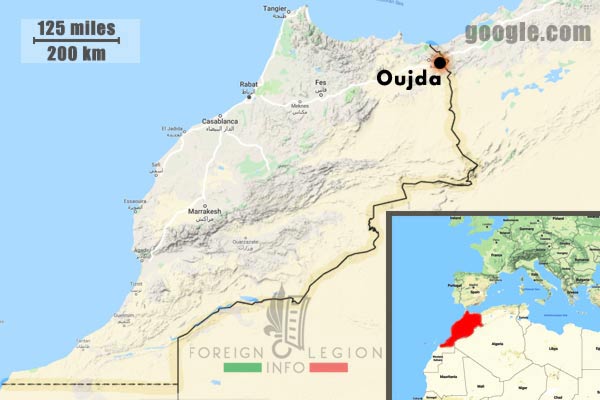

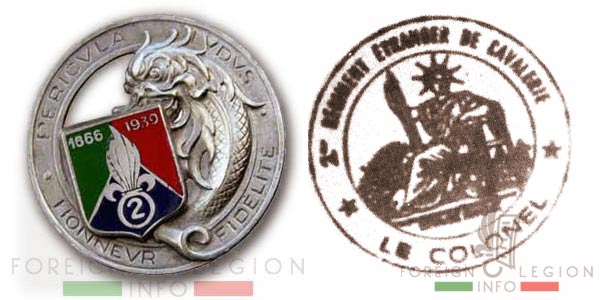
2e REC in Morocco from 1947 to 1954
In late 1947, a recreation center of the regiment was established in Saïdia, a coastal town north of Oujda along the Mediterranean Sea.
In late March 1948, the 4th Squadron was disbanded. Four months later, its men (five officers, 18 NCOs, and 176 legionnaires) were deployed as reinforcements to Indochina. Thus, only the 1st, 2nd, and 3rd Squadrons remained.
In June 1948, Oujda experienced tragic events following the establishment of the State of Israel. Moroccan Jews seeking to migrate to Israel became victims of anti-Jewish riots, and the 2e REC legionnaires were tasked with restoring order in the town.
In early August 1948, Lieutenant Colonel Paul de Chazelles took command of the regiment. He would remain the longest-serving commanding officer in the regiment’s history, holding command for four years.
On June 1, 1949, a new 4th Squadron was re-created in Sidi Bel Abbès, Algeria, under Captain Raymond Calmels. In late July, the new squadron was sent to Madagascar – an island in the Indian Ocean – to reinforce legionnaires of the 4e REI who had suppressed an armed revolt there. A little-known unit equipped with uncommon armored jeeps, it returned to Algeria on January 25, 1952, and was disbanded. Its men rejoined the 2e REC. To learn more about the campaign, read: Foreign Legion in Madagascar, 1947–1951.
In April 1952, Lieutenant Colonel Herchet took command of the regiment.
That same year, the War Memorial of Foreign Legion Cavalrymen was transferred from Tunisia to Camp Clark in Oujda. The memorial had originally been raised in Sousse, the 1er REC’s garrison town prior to World War II. Today (2025), the monument stands at the 1er REC’s Camp Carpiagne in southern France.
In January 1953, Lieutenant Colonel Jacques Colonna-Renucci took command of the 2e REC. He had previously served as a squadron commander with the regiment and with the GRD 97 from 1939 to 1940, and had also commanded 1er REC units in Indochina.
In mid-August 1953, Oujda witnessed a revolt – the first serious action of a local nationalist anti-French movement. During the clashes, an NCO and three legionnaires of the 2e REC were killed.
In March 1954, the regiment took part in military operations to restore order in the Nemours–Nedroma region on the Morocco–Algeria border, where unrest had persisted since the previous October.
Two months later, in May, a detachment consisting of two officers, 13 NCOs, and 50 legionnaires left for France to train with France’s new AMX 13 tanks, which were to replace the American models within the regiment.
In June 1954, the last large draft of 2e REC personnel was sent to Indochina. Upon arrival, some of the men were assigned to reinforce the newly reactivated 1er BEP (Parachute Battalion), which had been annihilated during the Battle of Dien Bien Phu only weeks earlier.
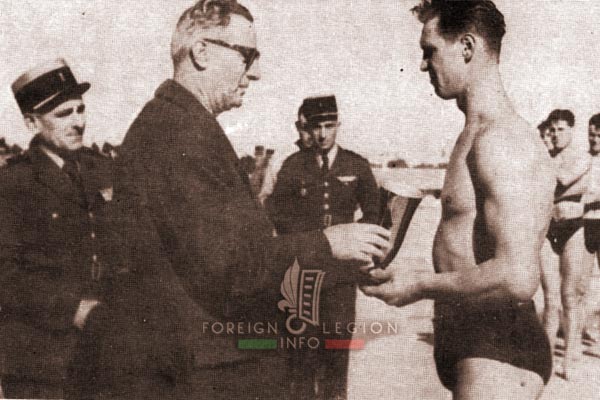

2e REC in Morocco from 1954 to 1956
In early August 1954, the First Indochina War was over. However, the situation with the insurgency in French North Africa (Morocco, Algeria, and Tunisia) had significantly worsened. Therefore, the 2e REC ceased its instruction tasks and became a regular operational unit.
In August and September, AMX 13 light tanks arrived to replace the old US M3 tanks. The regiment was thus reorganized. It now consisted of an HQ squadron, a reconnaissance squadron equipped with M8 cars (1st), and two tank squadrons equipped with AMX 13 tanks (2nd and 3rd).
In mid-January 1955, Lieutenant Colonel Jean-Louis Legendre took command of the 2e REC. He had just returned from Indochina, where he commanded the 1er REC’s 2e GA (Amphibious Group). Before World War II, as a young officer, he had also served with the 1er REC in Morocco.
In May, the 2e REC patrolled the Algeria–Morocco border.
In August, major modernization began at Camp Clark in Oujda, along with a period of patrols and guard duties in the Oujda sector. These actions were in response to earlier rebel attacks and massacres of French civilians in several Moroccan towns.
In early November, an important element was assigned to the regiment: the 2e GA 1er REC, the unit that the regiment’s colonel had commanded before assuming command of the 2e REC. After arriving from Indochina, its three squadrons were reorganized into two squadrons equipped with M8 armored cars and M3 scout cars. They became the Motorized Squadron Group (Groupement d’Escadrons Portés, GEP), 2e REC. The GEP consisted of 566 men, led by Major Vignon, later replaced by Major Raffenne. Considered an autonomous unit, it was stationed in Meknès, about 240 miles (380 km) southwest of Oujda.
From November 1955 to April 1956, the 2e REC was at its greatest strength with six squadrons:
- HQ Squadron (ECS) – N/A
- 1st Squadron (AMM8 armored cars) – N/A
- 2nd Squadron (AMX 13 tanks) – Captain Hautechaud
- 3rd Squadron (AMX 13 tanks) – Captain Reglade
- 4th Squadron (M8 armored cars) – Captain Claudepierre
- 5th Squadron (M3 scout cars) – Captain Werth
The squadrons from Oujda patrolled the region and its border with Algeria, while the GEP from Meknès operated in the Middle Atlas range.
However, the political situation changed unexpectedly quickly. In early March 1956, Morocco gained its independence, which surprised many – not only in the military. The next month, on April 30, the GEP was disbanded. Its men were reduced to a single squadron, the 4th, which rejoined the regiment in Oujda.
In June 1956, 2e REC legionnaires participated in Operations Zoulou and Pygmée in the Nedroma region of Algeria, close to the Moroccan border. However, in Morocco, the new government did not allow the French to carry out operations.
In late June, Colonel Legendre and his 1st and 4th Squadrons were sent to the Algerian–Moroccan border in eastern Morocco, as far as Bouarfa and Figuig. These posts were in a desert area. There, the men spent a very hot summer alongside their comrades from the 4e REI. Many legionnaires regarded the mission as punishment from the new Moroccan government.
In July, the 2nd Squadron in Oujda received five new AMX 13 tanks with a modernized FL 11 turret – AMX 13 FL 11. These were the only five tanks of this type ever produced. The squadron also received AMX 13 tanks with an FL 10 turret. Subsequently, the unit was assigned to the 1er REP (ex–1er BEP) in Algeria to train for Operation Musketeer, the Anglo-French invasion of Egypt. The 2nd Squadron left Morocco in early August.
In late September, the 2e REC squadrons were reunited in Oujda. However, the political situation in Morocco required French troops to withdraw from the country. In early October, the 3rd Squadron left Morocco for Algeria, where a regular conflict had erupted. The rest of the regiment followed after exchanging its AMX tanks for M8 cars and Dodge WC trucks. The 2e REC’s last squadron left Morocco on October 20. A chapter in its history had closed.
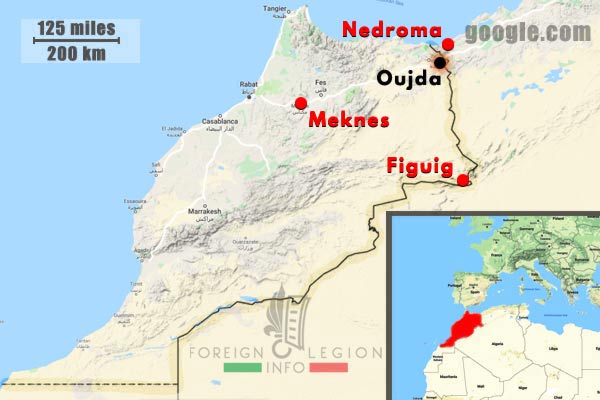
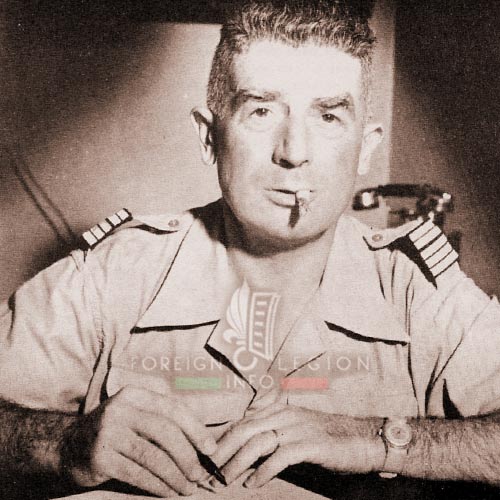
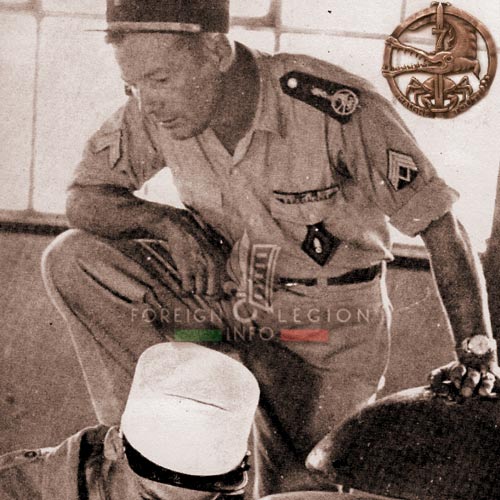
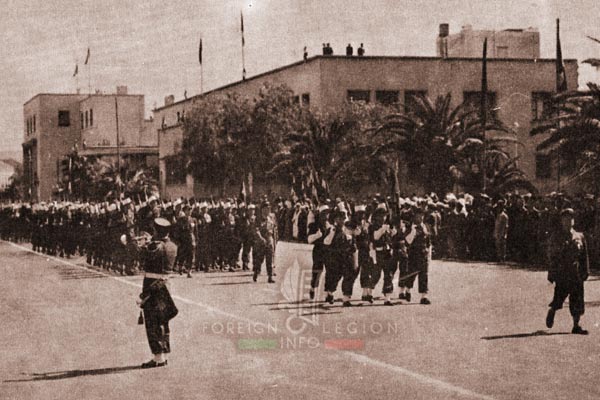
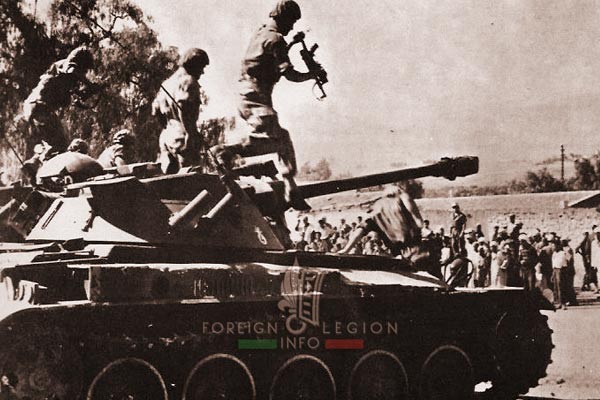
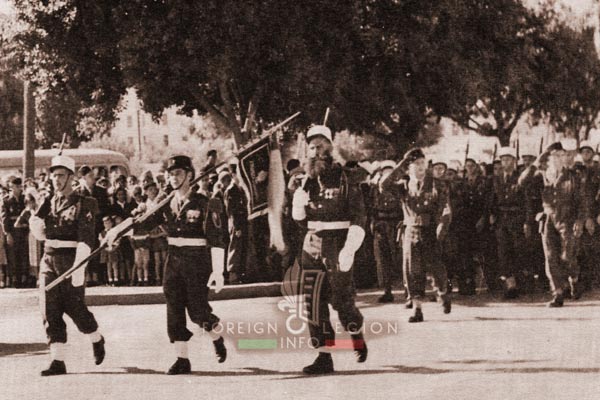
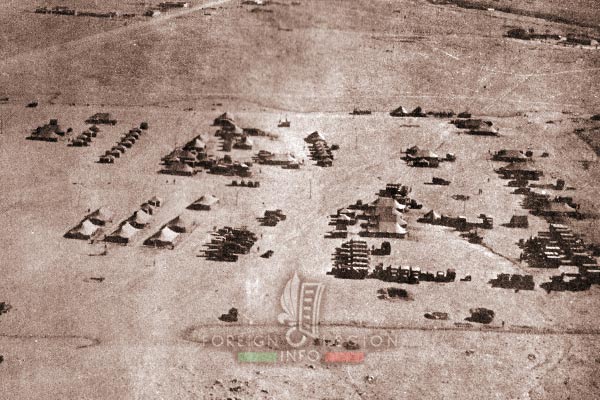
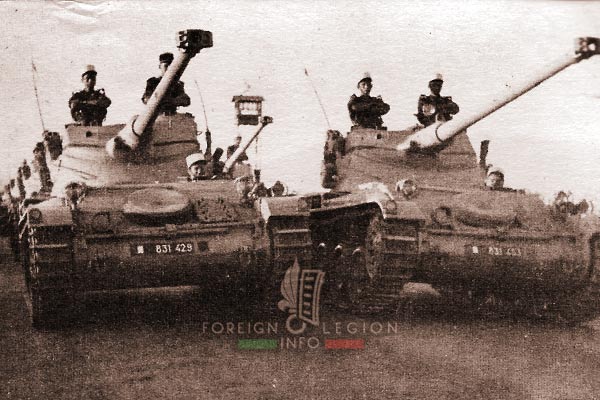
2e REC in Algeria from 1956 to 1957
As mentioned earlier, the year 1954 marked not only the end of the war in Indochina but also the beginning of hostilities in French North Africa – in Algeria, Morocco, and Tunisia. While Morocco and Tunisia became independent in early 1956, the situation in Algeria was much more complex. It was not a protectorate or colony; rather, Algeria was fully integrated into France in 1848 and became a regular department. Moreover, the fertile northern region of Algeria was inhabited by hundreds of thousands of settlers of European origin, including French, Italians, and Spaniards whose families had lived there for decades. The French did not want to give up this land.
The main anti-French insurgency was led by the National Liberation Front (Front de Libération Nationale, FLN) and its armed branch, the ALN. The rebels conducted guerrilla warfare, attacking French representatives (both indigenous and European) as well as French military convoys, depots, and smaller posts. They also raided pro-French indigenous communities and French-owned farms and factories, often killing innocent civilians living or working there. In response, the French authorities launched an anti-insurgent policy and military operations across Algeria, though they never officially declared war. The situation in the country deteriorated seriously in 1956.
Amid this turmoil, the 2e REC arrived in Algeria. It moved toward the central-eastern part of the country, at the edge of the Sahara Desert, where oil fields around Hassi Messaoud were being developed. Local rebels were threatening the construction of installations as well as a new pipeline to Biskra.
The 2e REC was stationed first in Biskra, then in Ouargla. In mid-January 1957, Lieutenant Colonel Étienne Ogier de Baulny, from the 1er REC, succeeded Colonel Legendre. He moved the HQ from Ouargla to Ghardaïa, then to Laghouat in April. The latter was a garrison town of a Foreign Legion motorized Saharan company, the 2e CSPL.
The 2e REC squadrons in Algeria in 1957 operated as semi-autonomous units. They were composed of an HQ, two armored pelotons equipped with M8 cars, and two motorized pelotons consisting of Dodge 6×6 trucks.
The 1st Squadron moved to the M’Raïer sector, between Biskra and Ouargla, to protect road construction work carried out in support of the newly developing oil fields. In May, it participated in several operations in the Laghouat region alongside the rest of the 2e REC. It then returned south to protect the oil fields located about 300 miles (480 km) from the regimental HQ in Laghouat. The squadron would remain there until early 1958.
The 2nd Squadron participated in the Anglo-French operation in Egypt and left the theater in late 1956. Back in Algeria in January, it merged with the 1er REP and became its Tank Squadron. The only cavalry element among Foreign Legion paratroopers, it used cavalry rank insignia (silver instead of gold) and cavalry rank titles. It ceased to exist in 1958.
The 3rd Squadron was stationed in Laghouat, along with the HQ, then moved farther west to Tadjmout. It maintained order and participated in military operations in the Laghouat region while expanding its military installations.
The 4th Squadron was stationed in Sidi Makhlouf, north of Laghouat. Apart from maintaining order in the sector and conducting military operations, its cavalrymen provided medical aid to the local population, distributed food, built roads, and cultivated land by planting trees.
Meanwhile, following a rule applied to all Legion infantry and cavalry regiments, Harkis were attached to the regiment. These were local pro-French Muslim Arabs serving in a harka – usually a horse-mounted group led by Legion cadres. They provided reconnaissance services and patrolled the assigned sector. In 1957, one such harka was assigned to the 4th Squadron in Sidi Makhlouf.
On May 21, the 2e REC was engaged in its first serious action in Algeria: the 3rd Squadron and a platoon of the 1st clashed with rebels at Le Kef Mimouna in the Djebel Amour mountain range.
On July 2, a fierce battle took place in the mountain range near Zaccar, northeast of Sidi Makhlouf. The 4th Squadron participated alongside another Saharan company, the 3e CSPL. That day, 80 rebels were killed.
During these mountain operations, the 2e REC cavalrymen quickly replaced their vehicles with helicopters. In such terrain, the latter proved far more effective for transporting troops directly into enemy zones. It was no surprise that the Piasecki H-21 “Banana” became an iconic image of the Algerian War.
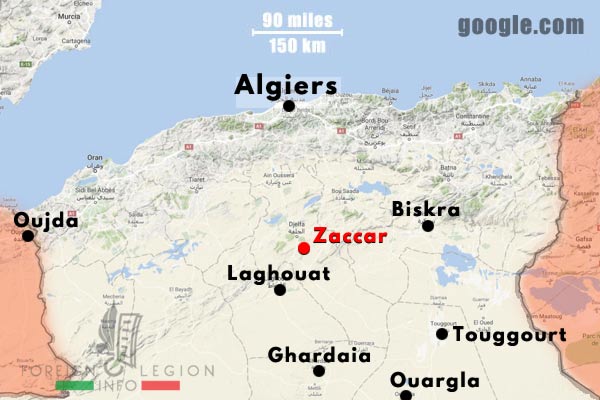
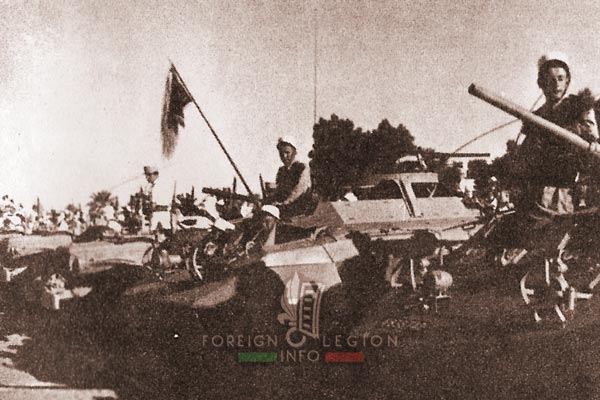
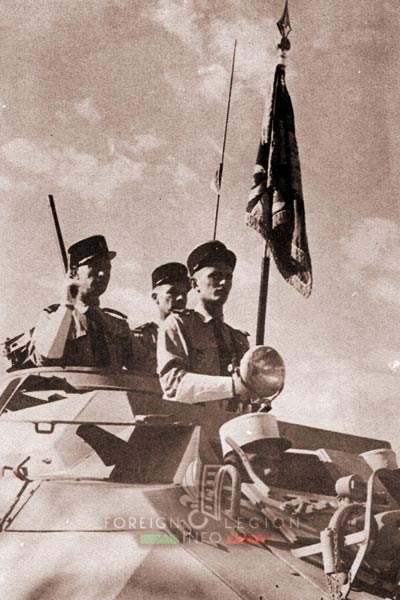
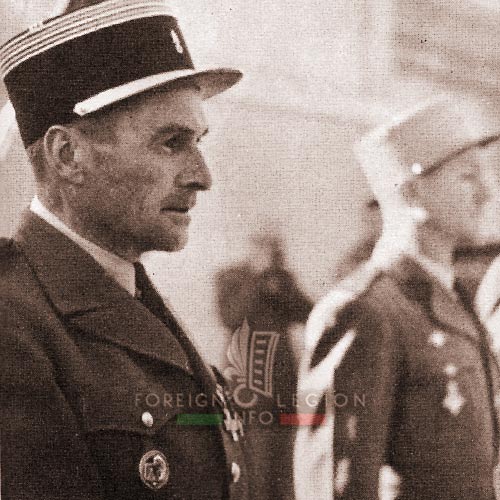
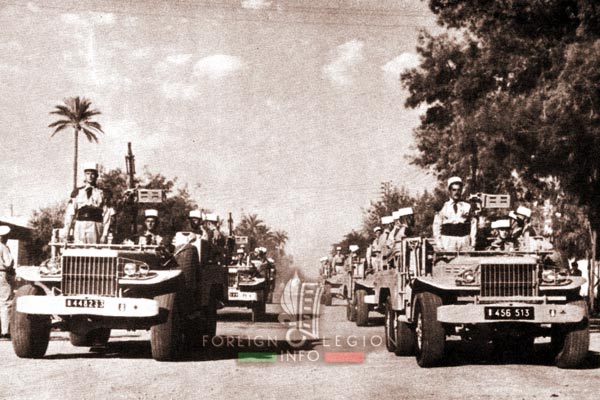
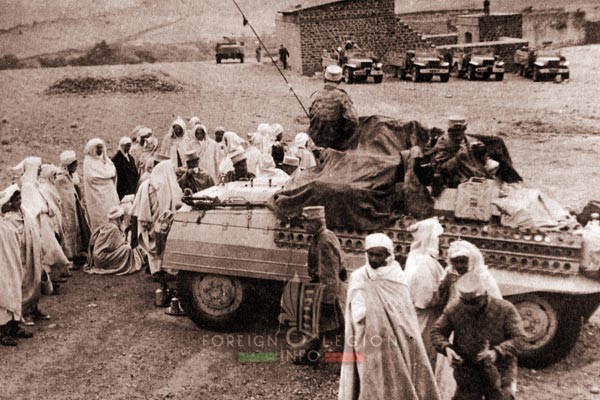
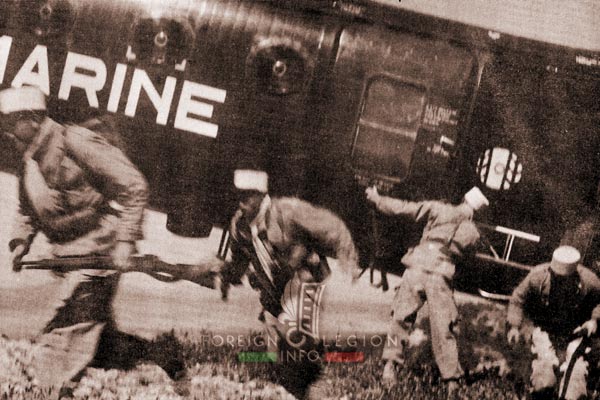
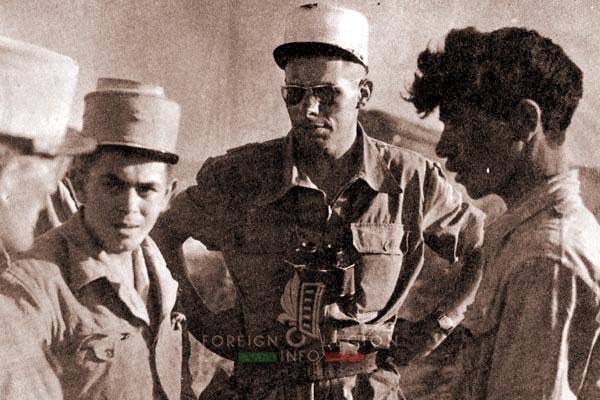
2e REC in Algeria from 1958 to 1959
By early 1958, the 2e REC squadrons had regrouped around Laghouat. In April, the regiment moved east to the Algeria–Tunisia border and was posted to Negrine in the Tébessa region. At the time, a “border war” began on the Morice Line, a fenced, barbed-wire, electrified, mined, and constantly monitored defensive line running along the border between Algeria and Tunisia. The order was given to neutralize all rebel groups crossing the border. Several Legion units, including the 2e REC, received orders to participate in this mission (called Herse Mobile).
The Legion cavalrymen were tasked with patrolling an approximately 20-mile-long (30 km) section of the electrified fence along the border with Tunisia (alongside motorized companies of the 4e REI) and being ready for an alert day and night. In addition, they guarded a hidden radar base in the sector.
During a border patrol on June 26, the 2e REC men spotted a large rebel group. In the following fierce battle, 61 rebels were killed and 54 were imprisoned.
In December, the 2e REC left the Negrine sector to be transferred to Djelfa, a town some 70 miles (110 km) northeast of Laghouat. At the end of the month, 27 rebels were killed and 24 were imprisoned during two battles in the sector (Djebel Groun, Djebel Sénalba – djebel usually means a mountain or a mountain range).
In 1959, the regiment still operated in the Djelfa sector, between Aflou, Sidi Makhlouf, and Bou Saada. That year, 383 rebels were killed, wounded, or imprisoned by the 2e REC. The most important battles occurred in the Djebel Sahari on January 28 (34 rebels killed or imprisoned), in the Djebels El Faidja and Serdoun on February 19 (90 rebels killed, another 17 captured), and in the Djebel Zemra, west of Bou Saada, on March 28 (67 rebels killed and 47 imprisoned).
On May 12, the 2e REC suffered its biggest loss. Captain Pierre Guyot became the only officer of the regiment to die in service. He was commanding the 1st Squadron at the time.
In July, the same 1st Squadron took part in Operation Étincelle in the Hodna Mountains of the M’Sila region northeast of Bou Saada. The Legion’s 1er REP, 3e REI, and 5e REI were also involved.
In October, the squadrons resumed regular operations in the Djelfa and Bou Saada areas; 37 rebels were killed that month.
In early November, after three years of absence, a new 2nd Squadron was constituted within the regiment. It was formed by the reorganization and redesignation of the former Foreign Legion Amphibious Squadron (EALE) from Arzew, northwestern Algeria. This was a little-known unit equipped with Alligators (Landing Vehicle Tracked, LVT) and assigned to the 1er RE. After being re-equipped with M8 armored cars and Dodge trucks, the new 2nd Squadron under Captain Piaton joined the regiment in early January 1960.
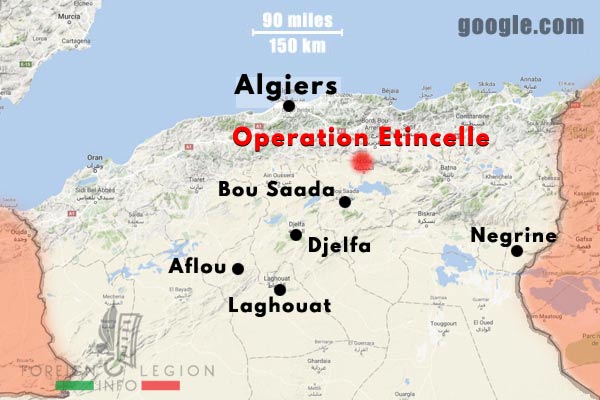
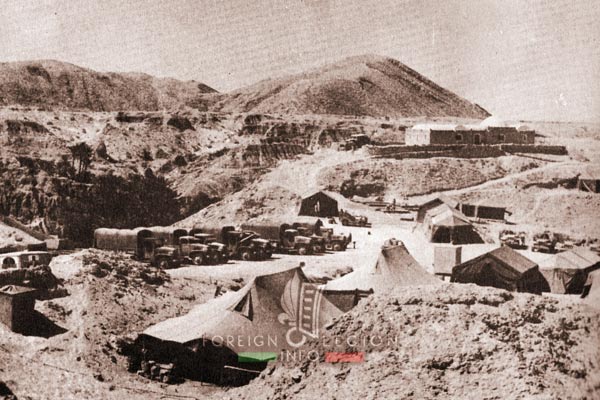
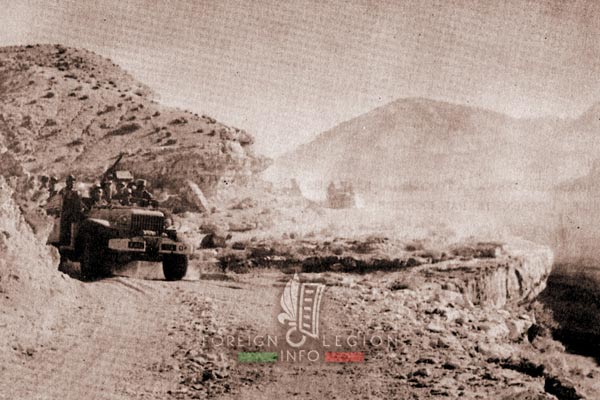
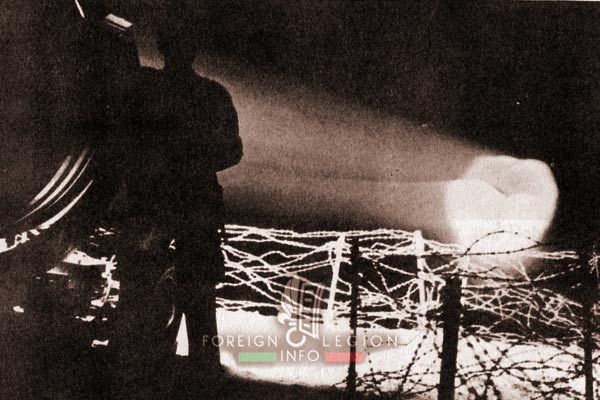

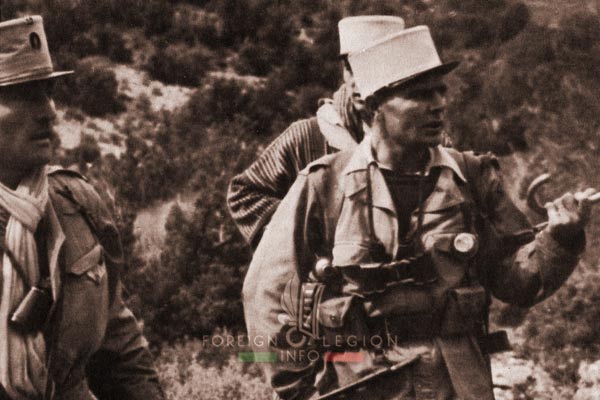
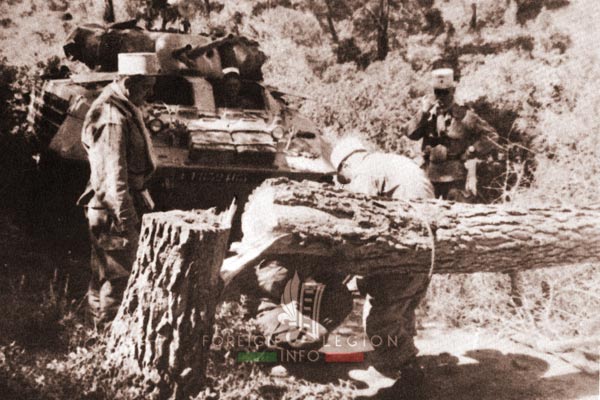
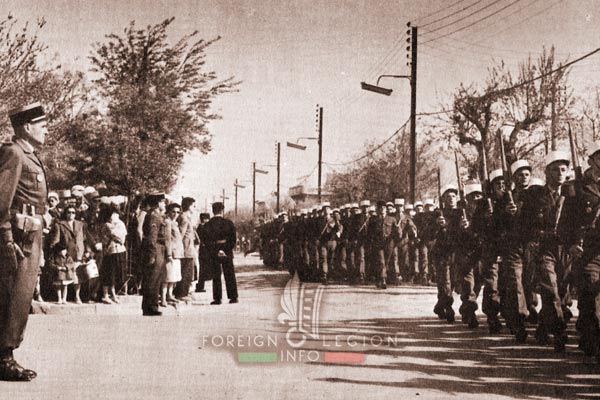
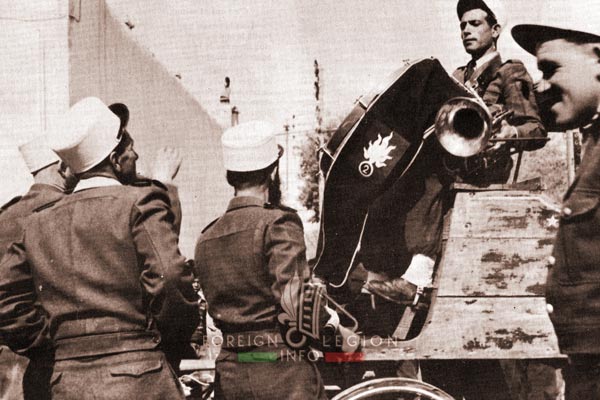
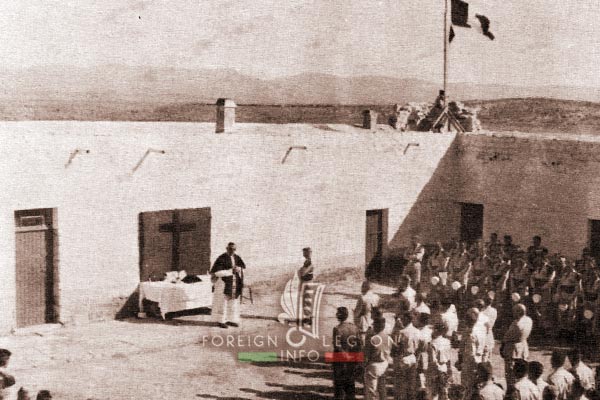
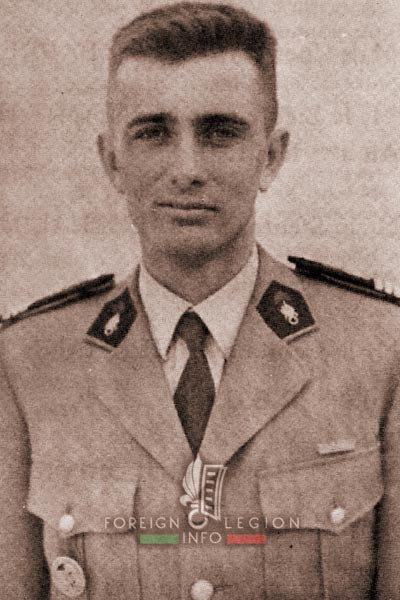
2e REC in Algeria from 1960 to 1962
In mid-January 1960, Lieutenant Colonel Charles de Coatgourden took command of the 2e REC. Until late September, his regiment operated around Djelfa and participated in dozens of military operations, some with significant results. Among them was a brutal battle at Gadet Meglires, a mountain north of Djelfa, on January 21. That day, 63 rebels were killed, while the regiment lost five men. On March 22, another fierce fight took place in the Djebel Mahreg, where 21 rebels were killed or wounded. In the Djebel Malleg on June 6, the rebels faced the 1st and 3rd Squadrons and suffered 30 men killed or wounded.
In late September, the 2e REC moved to Aïn Errich, east of Djelfa. It focused on the Djebel Bou Kahil massif, an important sanctuary for local armed rebels. There, during a fierce battle against two rebel groups on October 3, six men of the regiment were killed, including Adjudant Graudejus and Staff Sergeant Johnk. The enemy lost 21 men in that battle.
On November 22, three legionnaires died and 31 rebels were killed in the Djebel Saifoun near Bou Saada.
In December 1960, the 2e REC maintained order in Algiers, the capital of Algeria.
The squadrons continued to operate often separately and in different sectors, much to the displeasure of the commanding officer. This situation did not change even in 1961.
A rebel group was destroyed near Bou Saada on February 15; it lost 25 men. Five days later, on February 20 at Bou Melil, 21 rebels were killed.
In April, a coup d’état took place in the capital of Algeria: 1961 Generals’ Putsch in Algiers. The putsch was organized by four high-ranking retired French generals and directed against French President Charles de Gaulle because of his acceptance of Algeria’s independence in secret talks. The generals saw de Gaulle as a betrayer of France, of French settlers in Algeria, and of the French soldiers who had fallen during the Algerian War. The 2e REC’s commanding officer supported the putsch, as did many other senior officers in the Legion. However, the putsch failed, and Lieutenant Colonel de Coatgourden was removed from command.
In the Djebel Bou Kahil on May 19, the last fierce battle for the regiment took place; 20 rebels were killed. However, four legionnaires also died.
From that day, the French unilaterally ceased offensive operations.
In July, the 2e REC squadrons were sent north to Berrouaghia in the Médéa sector, south of Algiers. They were kept in the sector for several weeks.
In early August, Lieutenant Colonel Henri Baldini took command of the 2e REC.
The last significant operation took place on August 9–10; five rebels were killed.
In September, the 2e REC returned to Djelfa to maintain order in the sector. An important operation occurred later that month near Amourah, southeast of Djelfa. However, it did not yield any results.
In mid-January 1962, the regiment left Djelfa, where its rear base had been garrisoned for three years. It was transferred to the Biskra sector, where the unit had already been stationed briefly five years earlier, in October 1956. This time, the 2e REC was posted at Zeribet El Oued and nearby villages. The unit’s administrative services were transferred to Biskra.
However, the military situation had changed. Operations turned into routine patrols, and insurgents were rarely seen. Eventually, on March 19, 1962, the “Évian Accords” ended the Algerian War.
During the conflict in Algeria, the 2e REC lost 59 officers, NCOs, and legionnaires, while the regiment killed or imprisoned 1,022 rebels.
In April, the 2e REC moved again, this time to El Kantara, north of Biskra.
In early July, France recognized Algeria’s independence. The loss of Algeria led to the reorganization and significant reduction of the French armed forces, including the Legion. Harka units were dissolved.
Unfortunately, among Legion units, the 2e REC became the first and biggest victim of that reorganization. On June 12, an order directed that the regiment be reduced to only two squadrons and merged with the 1er REC to become its new 5th and 6th Squadrons.
On July 31, 1962, the 2e REC was officially deactivated.
The men of the 1er REC’s new 5th and 6th Squadrons kept wearing their former regiment’s insignia on the left shoulder board (following a Foreign Legion tradition that was abandoned only in the 1970s). However, even the two squadrons of the former Dauphin-Étranger did not survive long. They were disbanded a year later, in July 1963.
In 1984, the 2e REC’s standard (French cavalry regiments did not use flags) was entrusted to the guard of the Foreign Legion Detachment in Mayotte (DLEM) in the Indian Ocean. The DLEM paraded under this standard for forty years until its own deactivation in late 2024, thus bringing the heritage of the 2e REC to a definitive close. The standard then returned to the Legion’s Hall of Honor in Aubagne, its motherhouse.
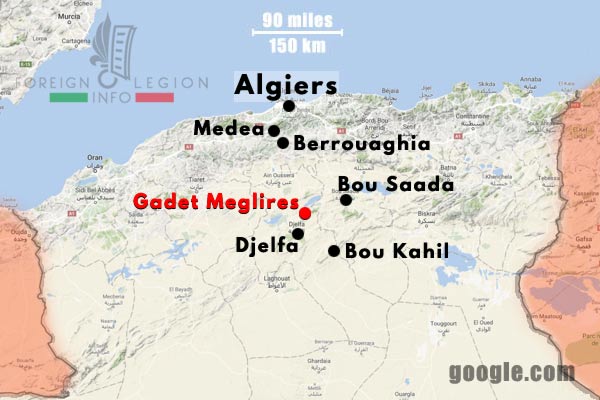
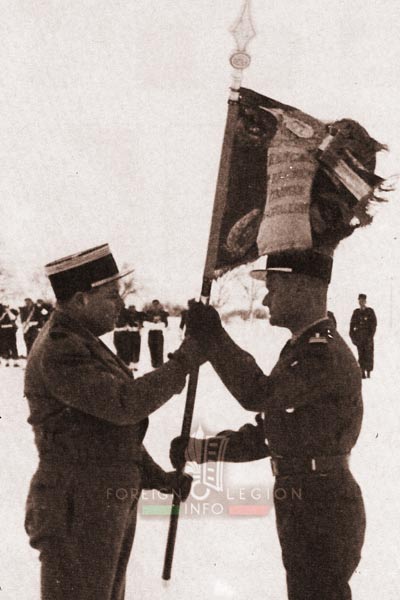
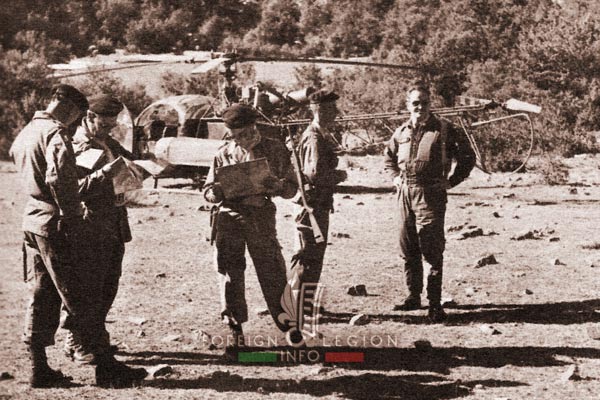
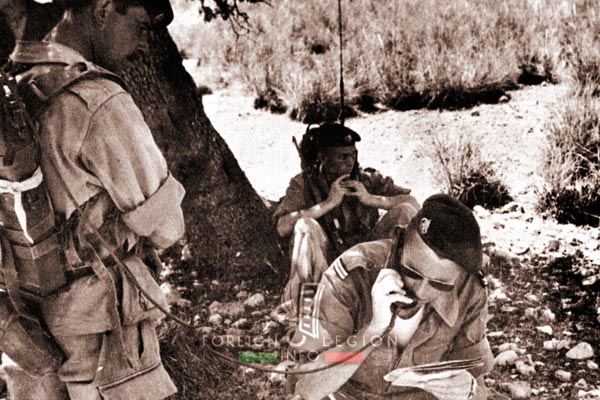
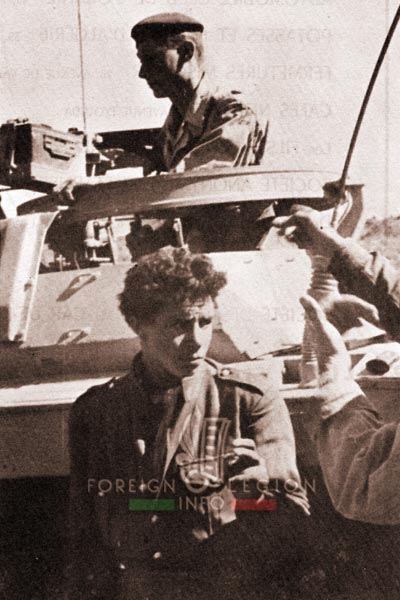
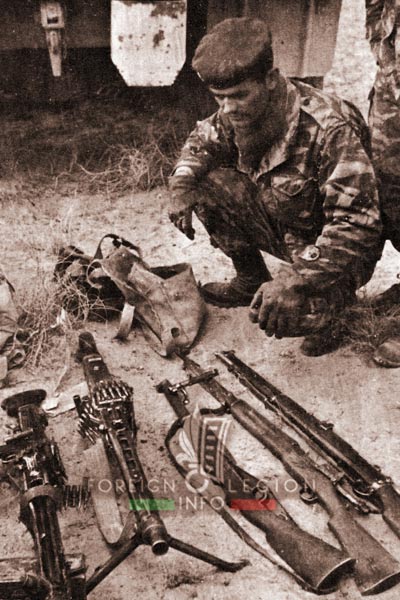
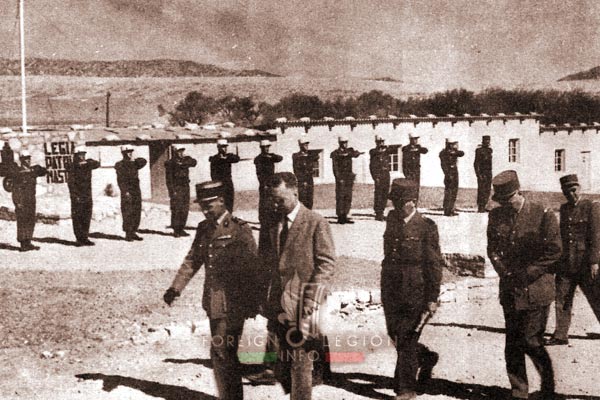
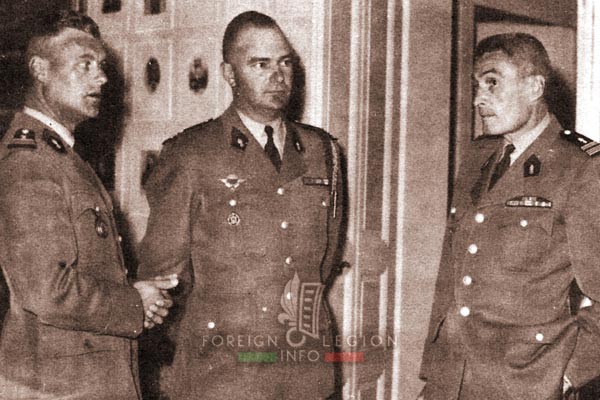
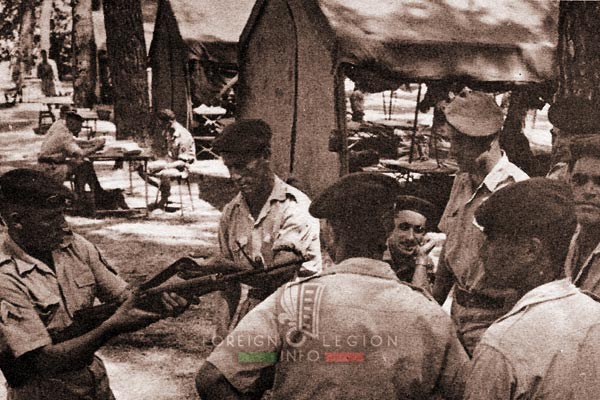
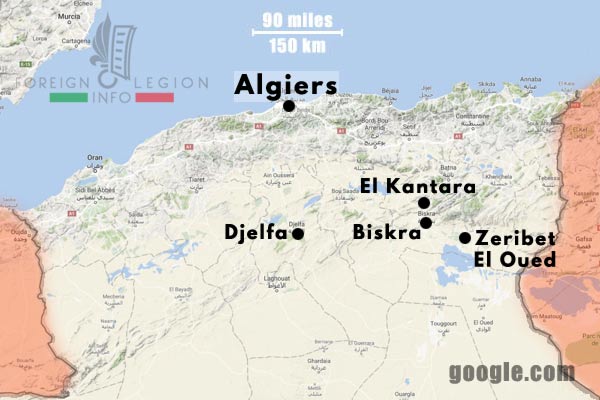
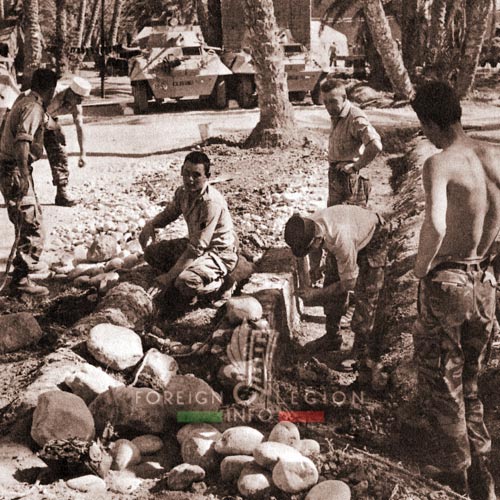
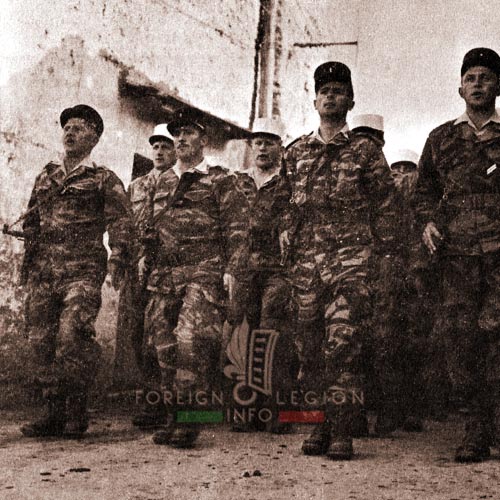
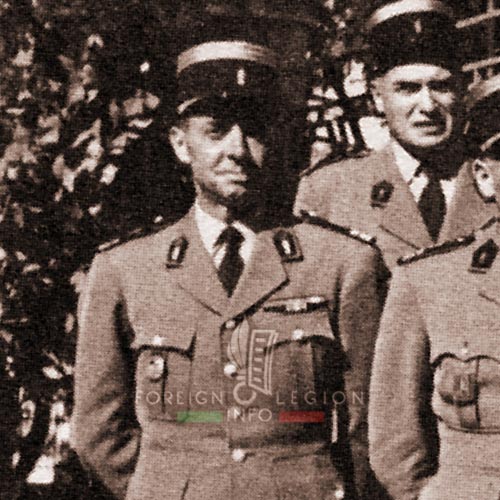
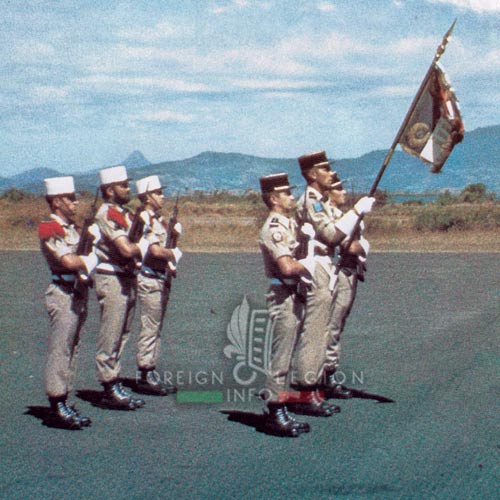
———
Main information sources:
Képi blanc magazines
Légion Etrangère magazines
Vert et Rouge magazines
Foreign Legion bulletins
J. Brunon, G.-R. Manue, P. Carles: Le Livre d’Or de la Légion (Charles-Lavauzelle, 1976)
Henri Le Mire: L’épopée moderne de la Légion 1940-1976 (SPL, 1978)
Collectif: Historique du 1er Régiment étranger de cavalerie 1921-1982 (Képi blanc, 1983)
Alain Gandy: Royal Etranger: Légionnaires cavaliers au combat (Presses de la Cité, 1985)
Pierre Dufour: La Légion au combat 1939-1945 (Jean Pierre Taillandier, 1990)
Legion cavalerie
Cavaliers Blindés
———
———
Learn more about the Foreign Legion history:
History of the 1st Foreign Cavalry Regiment
Foreign Legion Saharan Motorized Companies
Foreign Legion Mounted Companies
Foreign Legion Moroccan Motorized Group
Foreign Legion Algerian Motorized Group
French Foreign Legion in World War II
———
The page was updated on: October 11, 2025

